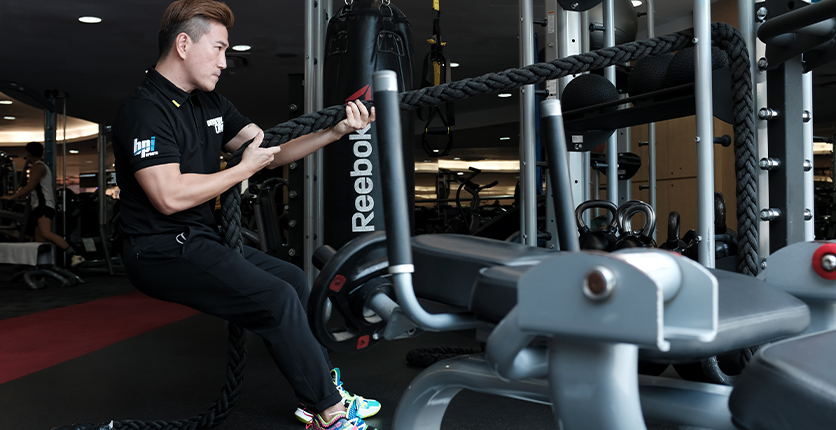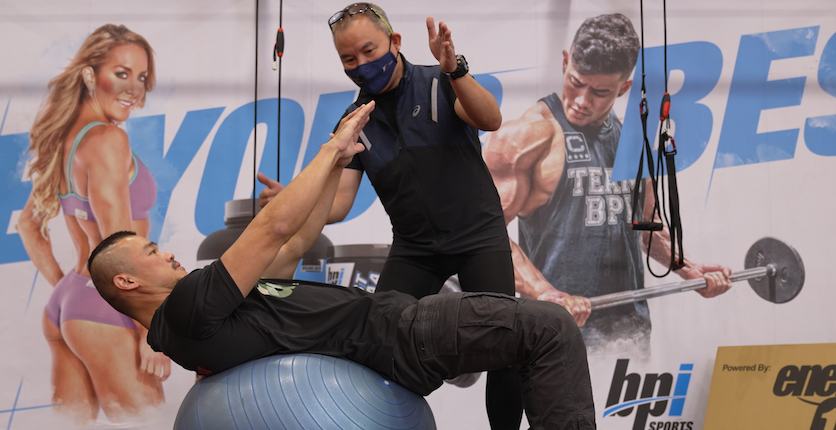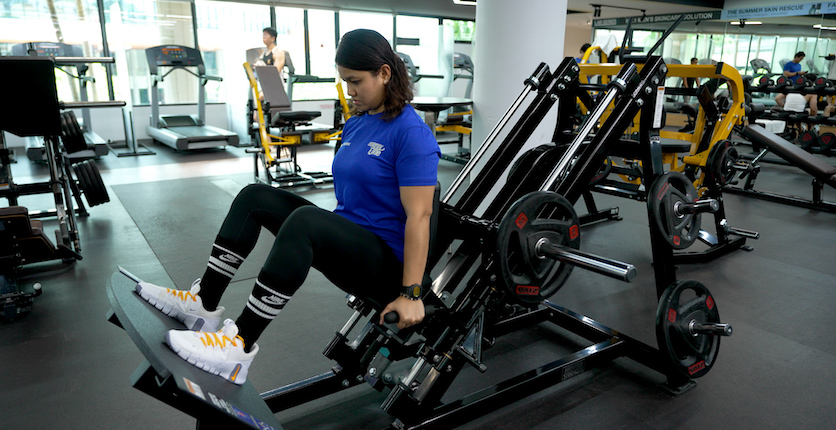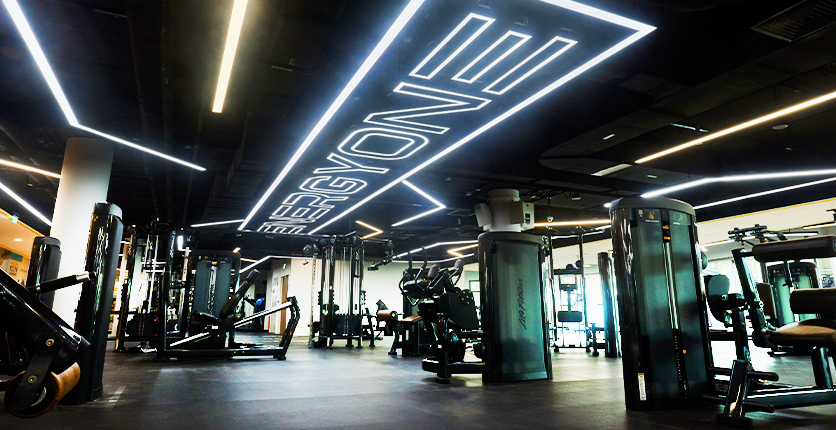Now that circuit breaker measures are lifted and the days of high-intensity interval training (HIIT) at home are almost muscle memory, what can you do to move on from just staying fit to getting ripped? Lesser known to others, HIIT workouts are technically part of an overarching fitness approach known as metabolic training. This is a hybrid of anaerobic strength training and cardio exercises. With proper guidance for metabolic training, you can fire up your stagnant metabolism – a definite plus for a longer duration of calorie burning.
George Tng, a SAFRA EnergyOne personal trainer, is an advocate for metabolic workouts flexibility as it is great for anyone, from martial arts practitioners to the general exercise layman. Age should not be a deterrent to keeping fit and healthy, which he emphasises when one decides to embark on such training. He recommends picking up tips from live streams (EnergyOne Facebook Page has a plethora of options for fitness enthusiasts) or to schedule a session with a fitness instructor at the gym before doing anything that could cause injury if one is not careful.
Recommended Metabolic Conditioning Workout Set
Minimum 3 sets of each exercise, with 12 repetitions.
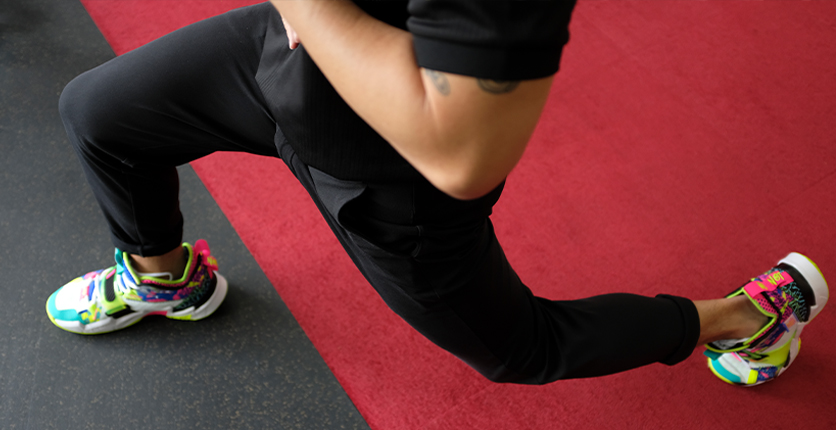
1. Warm-Up Sets
Before jumping into your workout, as metabolic training usually involves heavy strength exercises (with resistance bands, barbells or dumbbells), make sure you work in some warm-up sets with the
weights you will be training with for each exercise. Start light with the equipment to work on your form and to get your body acquainted with the movement.
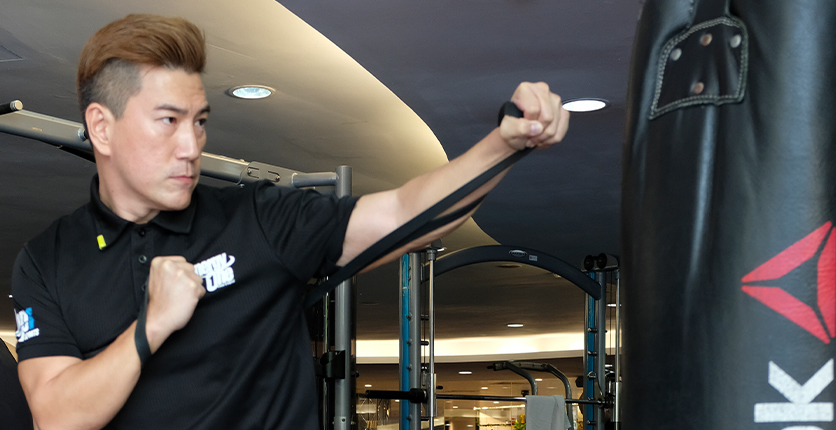
2. Punching Bags
The heavy bag is not just for practicing punches and kicks – it can increase muscle power and strength with better balance and coordination. The muscles in the arms, shoulders, chest, back, legs
and core will all be engaged, making this exercise an all-rounder for a full-body workout. Beginners should start slow and focus on straight punches or quick jabs, with the full extension of your elbow towards the front when delivering these jabs, which will build strength and impact.
Newbies should ensure that their master foot is always stable and positioned in the same direction as the punches delivered. Seasoned gym-goers can add a resistance band to increase core strength intensity, and activation of the triceps and right chest muscles.
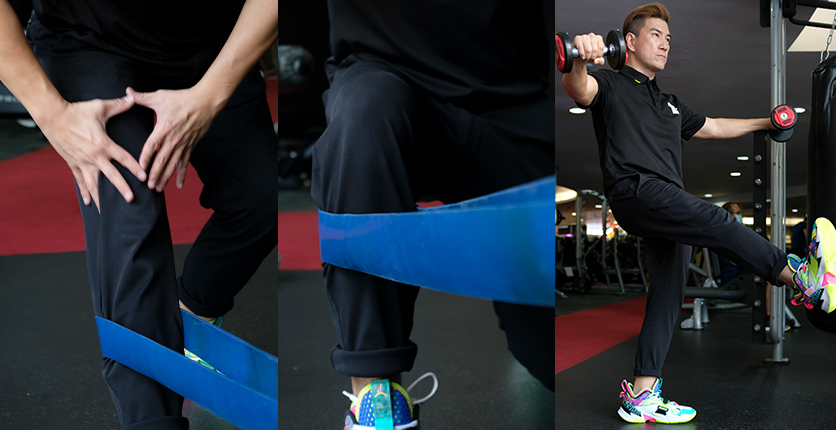
3. Reverse Lunges With A Resistance Band
Lunges are one of the most functional and commonly performed lower-body exercises due to its execution flexibility. However, this is one exercise that most people execute poorly. As an exercise, this tandem position closely mimics our daily motion, and is ideal to master as it challenges our balance and coordination, and even improves our walking and running. Lunges increase overall efficacy and prevent lower-body injuries during repetitive strength or core training.
Adding reverse lunges into your training forces you to bear more weight through your front leg and gives your glutes a good workout.
Instructions:
• Loop your resistance band around a stable structure.
• Place either your left or right leg in the resistance band. Ensure band is just below your knee.
• Contract your stomach and tighten your glutes.
• Step back into a lunge.
• As you lunge and sit back on your glutes, resist the pull of the band on your right leg. This move activates your glutes and quadriceps muscles in the front of your thighs.
• Hold for 2-5 seconds and come back to the starting position.
• Do 12 repetitions for both legs.
Tng points out that a common mistake during lunge execution is when the gluteus medius and maximus muscles are bearing the weight while doing double duty of stabilising the hip and pelvis. When these muscles don’t activate during the lunge, the front knee will move inwards, placing your kneecap in an extremely disadvantageous position, which can result in knee injury and pain.
He recommends doing this exercise in front of a mirror to monitor your positioning.
4. Single-Leg Lifts
Tng’s recommendation: Partner single-leg lifts with deadlifts (using weights you are comfortable with) once you are well-adjusted to these lifts, as a combination of lifting and leg lifts is slightly trickier to master. Tip: Ensure your hips and core are stable when the foot is off the ground, with your full weight on the grounded foot.
Instructions:
• Stand with feet comfortably apart, leaning fully on left foot.
• Extend your right leg while keeping the left straight and grounded. Do this till you feel the stretch in your core and quadriceps.
• To feel the contraction of your core and quadriceps, pause briefly during your left foot extension.
• Hold for 2-5 seconds and return to the starting position.
• Do 12 repetitions for both feet.
